
|

|
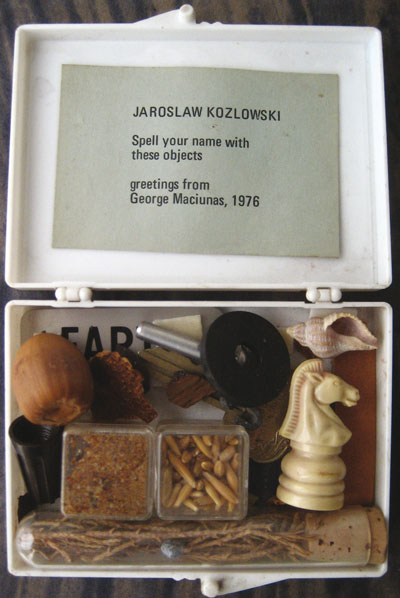
|
| George Maciunas, Spell Your Name with these Objects (1976). |
Introduction
by Philip Auslander Editor The Art Section
In this issue of The Art Section, we turn to Europe, both east and west, historical and contemporary. Our Italian correspondent
Giuseppe Gavazza reports on an exhibition in Milan that melds visual art with sound; Editor-in-Chief Deanna Sirlin interviews
acclaimed Dutch designer Tejo Remy; and art critic and historian Peter Frank discusses the Eastern European connections and
associations of Fluxus.
A theme that runs through all of these reflections is that of commerce: specifically, the commodification of art and artists.
All three articulate degrees of resistance to commodification. After visiting an exhibition that seems in part to trade on
the names of famous artists, Gavazza calls for an “Art Without Logos” and wonders what impact such a concept might
have on the practices of expectations of all participants in the art world. Sirlin asks Remy, directly, whether he would be
interested in selling his design work through American chain stores as other designers have, and receives an equally direct,
and negative, answer. And Frank notes that Fluxus founder “[George] Maciunas’ socialism with a lunatic face was
a logical response to the reactionary corporate capitalism of his America no less than to the fascism that had overwhelmed
his native land [of Lithuania]. . . .”
In addition, we are delighted to repot that the first event sponsored by The Art Section, an exhibition, ‘Endless
Pleasure’ by Australian Artist Andrew Hewish in Atlanta on February 29th through March 2nd, was a resounding success,
drawing a large and enthusiastic crowd. Stay tuned for future Art Section events!
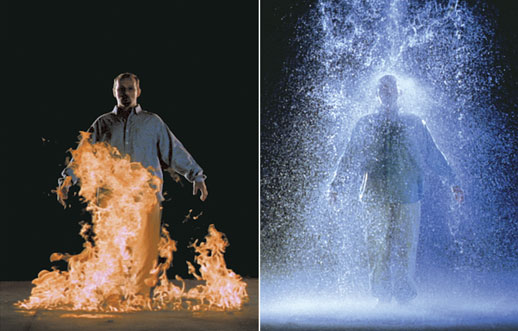
|
| Bill Viola, from Hatsu Yume First Dream (1981-2002). |
Art Without Logos
About
"Rumore: un buco nel silenzio"
“Noise: an hole in the silence”
Milano, Spazio Oberdan
February 28 - May 25, 2008
by Giuseppe Gavazza
I very much love the title of this exhibit: it is probably what I love most about the show.
Previously, I wrote for The Art Section about the absence and presence of sound/music in contemporary art spaces (and
times). If silence is the absence of sounds, well, open your senses and listen: silence is very present all over museums,
art galleries, and exhibits. After the big, important exhibition “Silence: listen to the show” (last summer in
Turin at Fondazione Sandretto Re Rebaudengo) a new exhibition appears to our happy new ears as something very attractive:
"Rumore: un buco nel silenzio" (“Noise: a hole in the silence”).
Both the title and the list of artists were quite attractive: Joseph Beuys, Marcel Broodthaers, John Cage, Mircea Cantor,
Giuseppe Chiari, Jimmie Durham, Jan Fabre, Lara Favaretto, William Kentridge, La Monte Young, Filippo Tommaso Marinetti, Kris
Martin, Shirin Neshat, Melik Ohanian, Yoko Ono, Adrian Paci, Diego Perrone, Miguel Angel Rios, Luigi Russolo, Mungo Thomson,
Bill Viola, Jordan Wolfson. It’s a pity no catalogue is yet available.
This Milanese edition of an exhibition previously seen in Watou, Belgium, during the summer of 2007 under the title “Een
lek in het zwijgen: noise”, considered to be the best exhibit of the year in Belgium, may have suffered from its new
space. Art spaces are (generally) designed for seeing, but sound is different: it is invasive, not directional, and - as we
know - “there are no eyelids for the ears.” In Spazio Oberdan, a big central space was defined as the “agorą”
for polyphonic presentation, resolving into random voices difficult to understand and to connect to the related video images.
Other smaller spaces provided more intimate opportunities to listen to and see single works but, unluckily, technical devices
in two of these rooms didn’t work, leaving the audio representation of work to our imaginations.
A good appetizer, hidden in the entry staircase, was Luigi Russolo’s “Risveglio di una cittą” (The City
Awakens, 1914); a century-old manifesto for an innovative conception of music that was truly utopian in its time: Open your
ears--music could be anything you hear.
Apparently, as was explained to visitors, the curators intended the central Agora to be boisterous: a chaotic convergence
of clashing, random, different sounds to represent the situation of the actual world. Art as mirror, or map, of the world.
I can believe this was the idea but it is, in my opinion, an unoriginal and unhappy one. Some silent conceptual sculptural
works survived this noisy struggle: Giuseppe Chiari’s “Scultura per pianoforte” (1989), John Cage’s
“Please Play or the Mother, the Father or the Family” (1989), La Monte Young’s “Piano Piece for David
Tudor” (1989), Filippo Tommaso Marinetti’s “Musica per Toilette” (1914) revisited by Daniele Lombardi
as “Omaggio a Marinetti” (1990; wow—only one year later than the others!).
But how can we perceive and understand Bill Viola’s slow, dream-like, hour-long video “Hatsu Yume – First
Dream” (1981-2002) in such a cacophonous room? A couple of videos, one of a Joseph Beuys art performance, the other
of silent, caged, and suspicious animals, could be appreciated in this context (Joseph Beuys, “Coyote: ‘I like
America and America likes me’” [1974] and Mircea Cantor, “Departure” [2005]) as could the water-aged
short black and white film “La Pluie” (The Rain, 1969) by Marcel Broodthaers and Mungo Thomson’s “The
American Desert (for Chuck Jones)” (2002), derived from the desert backdrops in Jones’s “Roadrunner”
cartoons. But the gentle sound of dancing, spinning tops in Miguel Angel Rios’s “On the Edge” (2005) and
the swirling smoke movements of William Kentridge’s drawn animation “Zeno Writing” (2001/2002) appear as
silent movies (were they really?) literally stoned by Jimmie Durham’s (audio)video “Stoning the Refrigerator”
(1996) and overwhelmed by Adrian Paci’s close-up recording of a diesel electric generator in “Turn on” (2004).
In case a curator would like to try a different approach, I have a suggestion. There are various systems that permit one to
direct sounds in a big space to smaller areas or headphones with manual or automatic selection of the desired audio track.
Fondazione Sandretto solved this problem with an excellent system for their show in the summer of 2007.
Moving a half floor up from the global noise arena, I entered the intimate room of Jan Fabre’s “A medieval punishment
for a contemporary artist (landscape with self-portrait)” (2007). It was great to enter, close the little door, and
listen to the crackling sound of my footprints on the ground while seeing, in the night-blue light, the head of the artist
emerging from ground like Molly in Beckett’s Happy Days: good silence as a hole in the noise. But this could
not last, and I had to emerge from the quiet hole back into the noisy art and world.
Five more rooms to close the art-loop, every one with an artwork.
There were twinned rooms, cheek to cheek, on the themes of the smile and laughter: one hundred famous portraits persuaded
by Photoshop to smile (Diego Perrone, “La stanza dei cento re che ridono” [The Room of the Hundred Laughing Kings,
1999]) and Lara Favaretto’s “Una risata vi seppellirą (Omaggio a Gino De Dominicis)” (A Laugh to Bury You:
Homage to Gino De Dominicis, 2005), a one-foot cubic black box that laughs out loud (but was sadly out of service). Also not
working were technical tools for Jordan Wolfson’s “Chaplin Piece” (2005), which consisted of the final speech
from Chaplin’s The Great Dictator written on the wall and “spoken” in sign language via a noisy 16 mm film
projector. Since the projector was not working, we all became deaf.
One step more: Melik Ohanian’s “The Hand” (2002): a video installation on nine monitors in which nine pairs
of hands tell personal stories in an unreal silence.
To finish: Yoko Ono and Shirin Neshat. Good work by famous artists; silent, like 99% of art pieces. “We are all water”
includes 118 little bottles half full of water with important people’s names handwritten on white labels. The connection
with Ono’s song of the same title provides a weak justification for the work’s inclusion, in my opinion. Perhaps
the photos “Shoja” and “I am its secret” by Shirin Neshat were included because of the artist’s
important name, as I am not able to connect them to the theme of noise and silence. Any piece by any famous artist could have
substituted for Ono’s and Neshat’s works. It’s always good to see important contemporary art being recognized,
but I feel that the artists’ names functioned here as branding, as “certified good quality” logos. The audience
for this exhibition probably didn’t need this.
A few blocks from Spazio Oberdamin in downtown Milan, I entered a Japanese chain store featuring only products without logos:
quality, design, functionality, price, and form presented for themselves. I can imagine “no-logo” itself become
a logo when subjected to large distribution, commercialism, and marketing’s rules. Nevertheless, I like to imagine a
no-logo art gallery. What would happen? Would it be better for artists, curators, people, connoisseurs, art critics?
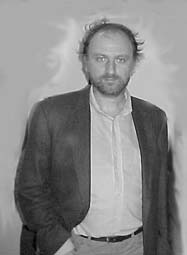
Giuseppe Gavazza is a composer who lives and works in Turin, Italy.
www.giuseppegavazza.it

|
| Tejo Remy |
Tejo Remy:
An Interview
by Deanna Sirlin
Tejo Remy is an interior and product designer in Utrecht, Holland, who has been commissioned
by the High Museum in Atlanta to create one of his signature chests of drawers to join its permanent decorative arts collection.
Deanna Sirlin, The Art Section's Editor-in-Chief, interviewed Remy concerning his work and this new commission.
Deanna Sirlin: You made your first chest of drawers, You Can't Lay Down Your Memories, in 1991. Will the fact that
the work commissioned by the High Museum is to be made in the American South, where memory and the past are important parts
of the culture, will change the work in any way? How is each work different or the same for you?
Tejo Remy: Use and memory are basic to the chest—you remember where you put the things you store
in the chest by the different drawers. The change will come in part from using drawers with a local story, the “genius
loci” of the drawer. This is also what makes each chest the same: each is an assembly of different drawers with different
stories.
DS: You have spoken about recollecting your memories in the drawers. Do you think Americans and Europeans differ in their
attitudes towards design? Are one country’s ideas about design more influenced by nostalgia and the past than another’s?
TR: I think this is more a personal issue, like art being in the eye of the beholder. Even being local
is a globalization. I do not see my design as nostalgic but more as an expression of the idea of creating your own paradise
using what is available.
DS: There is an element of humor in your work. Can there be such a thing as comic design, and how does this come about into
your work? Are there any other designers or artists that deal with humor that you appreciate? Does irony have a place within
your sensibility?
TR: The humor in my work is more to relativize. Marti Guiex, Maarten Baas--these are designers whose work
take a limit with design just by setting things in a different context, and sometimes it has humour. It is not only irony
but also providing an alternative and a change of mentality about design.
DS: What was the first time you thought to use recycled materials in your design work?
TR: To reclaim materials is also to tell a story of their use and to give things a different setting and
transform their meanings.
DS: What kind of story do you think your work tells? I think you have talked about Robinson Crusoe. Please explain how his
story connects to you and your design.
TR: The parallel with Robinson Crusoe is in the idea of creating your own paradise with what is available,
the way Robinson had to reinvent his surroundings with what he found.
DS: How important is craft and what does craft mean to you in relation to your work?
TR: Craft is a way of making, and to make this in small production with a local craftsman.
DS: Is there a difference between design and art now? Are these labels useful in any way?
TR: Labels are only good for giving things a place, which is also dangerous. Design is applied art, and
art is design without a function.
DS: Does taste have any relationship to your ideas about quality in design?
TR: I always try to work beyond taste. The method of making and the material will make the decoration.
DS: Would you mass-produce your work for American Big Box stores (such as Wal Mart) like other designers have recently agreed
to do? Do you believe in “design for all“?
TR: The things we design are not very suitable for mass production. This does not mean that I would like
to do this. Design for all is a myth; there will be always a taste issue. You cannot please everybody—why would you
want to?

Deanna Sirlin is Editor-in-Chief of The Art Section and an artist whose work can be seen at www.deannasirlin.com.
For more information on Tejo Remy, please visit www.remyveenhuizen.nl.

|
| George Maciunas |
Worlds In Flux:
A Transcendence Of Ideology, An Ideology Of Transcendence
by Peter Frank
Presented at the opening symposium for "Fluxus East" at the Bunkier Sztuki in Cracow, February 9 2008.
As it was intended to be, Fluxus is many things to many people. For some it is a political expression. For others, it is an
expression against politics or, more to the point, around politics. It is a unified movement for some; for others, it is an
almost circumstantial coming together of like-minded people – or at least people who think they share some attitudes
and practices with one another. Fluxus practice means one thing in one place, another thing in another place. Even the historical
roster of Fluxus participants changes from position to position, commentator to commentator, Fluxus artist to Fluxus artist.
In the end, it seems, Fluxus was and remains a union of anarchists, a conspiracy of the distracted, a phalanx of rabbits.
As we well know, George Maciunas, native of Kaunas in Lithuania, resident of New York and Wiesbaden and Massachusetts,
tried to unionize these anarchists, focus the conspirators, and lead the rabbits onward to the ultimate victory of socialism.
Typically, and fortunately, it was Maciunas’ idiosyncratic version of socialism towards which he strove. And typically,
those accomplishments of Fluxus that can be truly identified as communitarian, cooperative, and even “socialist”
were brought about through Maciunas’ brilliance and tireless work, as well as the brilliance, cooperation, and devotion
of his colleagues.
Maciunas may or may not have believed in a top-down socialism, but he practiced a bottom-up, “do-it-yourself”
collectivism that inspired some, affected many, was emulated by a few, and was duplicated by none. Whether he was organizing
and disseminating Fluxus work and thought or creating the artists’ cooperative living arrangements that lay the groundwork
for the artists’ neighborhood of SoHo, Maciunas came up with his ideas largely alone, labored in near-solitude, and
was at least as likely to alienate as to persuade his artist peers and the wider world – especially the wider world
of officialdom, the bureaucracies whom Maciunas needed to secure his real estate concepts and deliver his eccentric packages.
At one point he was being pursued both by the city of New York and an arm of the Mafia. And none of his friends or admirers
could adequately help or protect him from being heavily fined or from losing an eye. Maciunas doubtless would have wound up
in jail or murdered, had ill health not ambushed him first.
The story of Maciunas’ life, sad and hilarious, sounds familiar, doesn’t it. It could have been written, at
least in parts, by Gogol, by Kafka, by Bruno Schulz, by Robert Musil, by Sholom Aleichem, by any of scores of writers who
took the pulse of life in central and eastern Europe in the 19th and 20th centuries and made art of its tribulations and ironies.
The Lithuanian native may not have been any crazier than any other hypo-manic megalomaniac; art and life are full of such
people, and we must remain grateful that, despite their own pain and peril and our discomfort, the few who do great things
are not medicated enough to suppress their drive. But however universally human Maciunas’ quixotic nature and blind
idealism might have been, his feisty embrace of the absurd and love-hate relationship with authority was grown in the soil
between the Elbe and the Volga.
Fluxus, as Maciunas would proudly point out, was a sensibility that transcended boundaries. It was as Japanese as American,
as Brazilian as French, as Danish as Australian. But, just as Kafka’s stories make as much sense in Urdu as they do
in German and the photographs of Witkacy frighten Koreans as readily as they do Poles, Fluxus translated into a universal
practice, a sensibility nurtured at least as much in the dark humor and passive resistance of eastern European life as in
the can-do American spirit or the conundrum thought of Zen. In Fluxus, many easts met many wests.
In its dependence on personal contacts and friendships and on the circulation of limited-edition objects and texts, Fluxus
has existed within the art world less as a stylistic common cause on the level of Pop art or Minimalism than as an agreement
among friends. Even though Maciunas had a modernist’s fondness for manifestos, the voice of Fluxus speaks not with an
operatic roar but with a conspiratorial, or perhaps seductive, whisper. Fluxus has been less a movement than a kind of artistic,
and commercial, samizdat.
Furthermore, that samizdat has circulated far beyond the world of visual art. After all, Fluxus bridges not only geographic
polarities, but artistic disciplines. Indeed, it not only bridges such disciplines, but fuses them. While a phenomenon in
the discourse of visual art, Fluxus has also figured crucially in new music, experimental literature, and radical theater.
Furthermore, the Fluxus samizdat has circulated not just among the artists and composers and writers and performers, but among
their audiences as well. Fluxus stood, and still stands, for the simplification and democratization of all these creative
forms, empowering the audience as well as artists themselves. Indeed, it grants any and all those audience members who had
not recognized themselves as artists the permission to make art.
Ultimately, Fluxus has functioned as a zone of free play in and among all the artistic disciplines, a zone where the rebellious
and the curious, the awkward and the mercurial, the restless and the innovative, the timid and the suppressed could not only
find their own minds and voices, but could find one another’s. In the west, this zone of “free play” has
overlapped other zones of creative activity almost invisibly. It has functioned for many artists as a permanent alternative
to standard models of artistic practice and dissemination, and it has functioned for many others as a temporary alternative,
a laboratory for unreasonable but urgent ideas. Deliberately elusive, this zone infiltrates the entire realm of creative practice,
but pretends not to exist.
When Fluxus emerged, and for a long time afterward, those who relied upon this zone – in particular, those whose
artistic output issued entirely from it – were regarded as clannish and aloof, and at the same time as total pranksters
interested only in playing tricks, not in making art. The bearers of the Fluxus standard in the west, Maciunas not least,
encouraged this unflattering regard with their near-secretive interrelations and their low-impact public presentations. The
normally intimate nature of Fluxus work made both those interrelations and those presentations inevitable, and the occasionally
scandalous nature of such artwork contrasted grotesquely with the disconcerting delicacy or elegant simplicity of the work
itself. (Think, for instance, of Nam June Paik’s composition for Charlotte Moorman, Opera Sextronique (1967) –
which put poor Charlotte in jail.) As a result, Fluxus was dismissed as an extended joke played feebly on the art world by
a small band of hippies. In the absence of substantial gallery, publication, or performance exposure around the world, that
small band came to rely on itself for coherency – itself and a body of admirers that continued to widen almost entirely
through word of mouth.
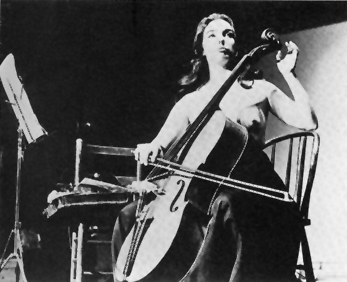
|
| Charlotte Moorman performing Nam June Paik's Opera Sextronique, 1967. |
Like every other form of samizdat, the samizdat of the telephone – and the
fax machine, and now of course the Internet – is a luxury enjoyed by those who live under benign governments. Those
who suffer under more repressive regimes must be more circumspect. But by circulating material that reiterates, closely resembles,
or improves upon that available in freer societies, those on whom an iron curtain has descended maintain the experimental
verve of the modern era and the eternally resistant soul of Till Eulenspiegel and Corporal Schwejk. Fluxus, it can be argued,
took the form of a samizdat in the west because its organizer and guiding spirit was a child of eastern Europe. Perhaps or
perhaps not; but Fluxus could certainly return to eastern Europe at a time of severe constriction and breathe a little life
into a few hearts.
Vytautas Landsbergis, Maciunas’ childhood friend and his only Fluxus correspondent in the USSR itself, remembers
life after Khruschev’s tentative thaw as “deadly stagnation.” In Poland, according to the late Emmett Williams,
the period was described as “the heavy days.” While the 1960s and ‘70s and even ‘80s were decades
of vital change, even upheaval, in the west, the rulers of the eastern bloc made sure that little if any such dancing went
on in their streets. Even though Stalinist fascism had passed out of fashion, the self-appointed custodians of communism maintained
a presence as pervasive, humorless and enervating as that of any Savonarola or Ayatollah. In the face of such totalitarian
fundamentalism, shaping as it did the datebooks and maps and photo albums of almost everyone east or north of Vienna, even
satire was a deadly risk. Defiance was futile.
Among the very few spices available for this gray goulash was the scripted, even regimented silliness that Fluxus provided,
the ludicrous and seemingly meaningless acts it proposed. These could be exercised in private and occasionally, when the political
weather did not seem too inclement, in public. The officials, in their smug obtuseness, would not comprehend what the activities
suggested. True, when the paranoia that poisoned everyone else’s lives wet the boots of their overseers, public exhibitions
would be destroyed and outdoor performances, no matter how innocent, would be interrupted and dispersed. But cleverness was
built into Fluxus. As Milan Knižak can tell you, you had to know the playing field much better than the police did.
Of course, no matter what the police may have thought, Knižak and Landsbergis and Julius Koller and Endre Tot and
so many others – right back to Tadeusz Kantor, perhaps the bravest and most extravagant of all of them – were
not proposing regime change. They may have been dreaming of it and preparing for it, but they knew better than to advocate
it. Rather, they were doing something at once more benign and more subversive: they were demonstrating models of activity,
and thus of thought, that could exist on both sides of that iron curtain, and that had different but parallel meanings on
either side. On the west side of the curtain such activity implied a freedom of imagination; on the east side, it implied
a freedom of thought. A gesture done in a park or in a café, in a classroom or in someone’s kitchen, or even read on
a page, suggested a way of understanding the world that met that world at a 45-degree angle – or maybe 55 degrees. It
had everything to do with quotidian existence and nothing to do with quotidian existence. It gave examples of how to see life,
and even see your way through life, by transcending the bounds of the ideology that dictated your life. East or west, such
activity on the Fluxus model meant getting above the everyday even though you couldn’t get past it.
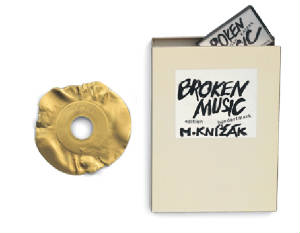
|
| Milan Knizak, Broken Music, 1983. |
As the joke goes, under communism, man exploits man. Under capitalism, it’s exactly
the reverse. Neither system encourages great spiritual flight or aesthetic insight, restricting access to such transcendence
to the privileged few – who can be depended on to squander such access on material acquisition. Living in and under
either system – or, in fact, any other hierarchical system of social organization, such as theocracy, military dictatorship,
or mob rule – requires the subjugation of nearly all one’s sensibility. Maciunas’ socialism with a lunatic
face was a logical response to the reactionary corporate capitalism of his America no less than to the fascism that had overwhelmed
his native land; and the sometimes boisterous anarchism of his friends in Fluxus was a similar response to the near-universal
spiritual impoverishment of the postwar era.
As a result, Fluxus proposed, and I think still proposes, an ideology of transcendence, a mindset that takes one above
the constricting principles of political and social conduct in one’s own society, no matter what they happen to be.
This builds on the “aesthetic of indifference” that motivated the work of artists who influenced Fluxus, figures
such as Marcel Duchamp and John Cage who found aesthetic gratification where there was supposed to be none by regarding the
quotidian as illuminating. But the ideology of transcendence does not mean that life itself, with all its struggles, can simply
be ignored. Rather, the praxis that attends such an ideology provides insight into new solutions for abiding problems. It
led George Maciunas to construct the artists’ co-op; it led Joseph Beuys to create a political movement that helped
give rise to the Greens; it led Nam June Paik to turn television into an art form; it led Yoko Ono to revolutionize popular
music; and it led dozens of artists in eastern Europe to find ways around the perceptual as well as political oppression that
enveloped them. In the latter case, or cases, the ideology of transcendence was turned on its head, and became a transcendence
of ideology. And I want to thank all of you here who have been responsible for this praxis, for this ideology, and for this
transcendence for providing me, from my adolescence on, with my own path into art – my own phalanx of rabbits.
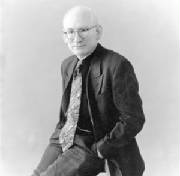
Peter Frank is Senior Curator at the Riverside Art Museum; art critic for Angeleno Magazine and the L.A. Weekly; and a published
poet (The Travelogues, Sun & Moon Press, 1982).
|

|

|


